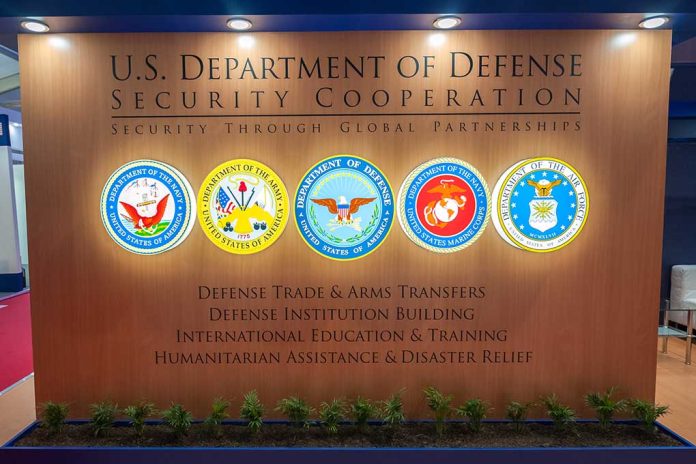
The Pentagon’s reauthorization of Department of Defense Directive 5240.01 has ignited controversy over potential military use of lethal force against American citizens.
At a Glance
- DoD Directive 5240.01 allows military use of lethal force against citizens under certain conditions
- The directive broadens military authority to assist law enforcement during “civil disturbances”
- Concerns raised about potential misuse during election-related unrest
- Secretary of Defense approval required for lethal force authorization
- Critics worry about government overreach and shift towards a security state
Expanded Military Authority Raises Eyebrows
The Department of Defense has quietly reissued Directive 5240.01, a move that has sparked intense debate about the extent of military involvement in domestic affairs. This directive, which outlines the conditions under which the U.S. military can engage with American citizens, now includes provisions for the use of lethal force during national security emergencies.
While the Posse Comitatus Act of 1878 generally limits the use of military forces for domestic law enforcement, the Insurrection Act can override these restrictions. The 2024 version of Directive 5240.01 goes further than its 2016 predecessor, expanding military authority to assist law enforcement during what it terms “civil disturbances.”
Lethal Force Authorization and Oversight
One of the most controversial aspects of the reauthorized directive is the provision for using lethal force against American citizens. This authorization is not without checks, as it requires explicit approval from the Secretary of Defense. However, the mere existence of such a provision has raised alarm among civil rights advocates and constitutional scholars. “As reported by Zero Hedge, the reauthorization of Directive 5240.01 would permit the U.S. military to use “lethal force” on the civilian population in the event of a “national security” emergency.”
The directive also allows for intelligence sharing on U.S. citizens if a law violation is determined, further blurring the lines between military and domestic law enforcement operations. This expansion of military duties during national security demands has prompted ethical questions about its potential application during times of civil strife.
🚨 Breaking 🚨
The #DoD Directive 5240.01 was quietly amended recently. The most recent revision, approved by Deputy Secretary of Defense Kathleen Hicks effective on 9/272/24 NOW includes the legal use of lethal force against civilians by the military if directed by DoD— Chad Robichaux (@ChadRobo) October 19, 2024
Concerns Over Timing and Potential Misuse
The timing of this reauthorization has not gone unnoticed. With the backdrop of a charged electoral atmosphere, many are questioning whether this directive could be misused during election-related unrest. The term “civil disturbance” within the directive is open to interpretation, leading to worries about potential overreach.
Historical examples like the Kent State shootings in 1970 and the Detroit riots of 1967 serve as stark reminders of the risks associated with military involvement in civil unrest. Critics argue that the directive’s broad language could lead to a slippery slope, potentially allowing for military deployment in scenarios that might not warrant such an extreme response.
Balancing National Security and Civil Liberties
Supporters of the directive argue that it simply codifies existing practices and provides a clear chain of command in extreme situations. They contend that the requirement for Secretary of Defense approval serves as a significant safeguard against misuse. However, detractors worry that this centralization of power could lead to rapid escalation in tense situations.
The debate over Directive 5240.01 underscores the ongoing tension between national security concerns and the preservation of civil liberties. As the United States grapples with complex domestic challenges, the role of the military in maintaining order while respecting constitutional rights remains a contentious and crucial issue. The coming months will likely see continued scrutiny of this directive as its implications for American democracy become clearer.







